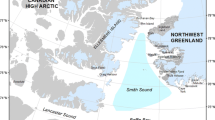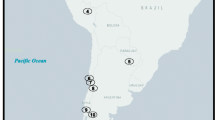Abstract
Rappaport's (1968) study of self-regulation in the Tsembaga Maring ecosystem is an important substantive contribution to human ecology. Rappaport hypothesized that the Maring pig festival cycle is the dominant mechanism by which the quality of the Tsembaga ecosystem is maintained. In this paper, we demonstrate that the pig festival cannot serve this function. Simulation models of the Tsembaga ecosystem show that a stable, self-regulating equilibrium of the kind proposed by Rappaport is highly dependent upon a carefully chosen set of parameters which do not represent the most accurate choice from the available data. In the simulation model of Rappaport's hypothesis constructed by Shantzis and Behrens, equilibrium depends upon fixed population growth rates that lead to regularly scheduled pig festivals, whose timing insures that a fixed rate of removal of Tsembaga individuals in warfare prevents net population growth. More realistic models uniformly suggest that the pig festival plays no essential role in ecosystem regulation. We conclude that the evidence provided does not support the hypothesis.
Similar content being viewed by others
References
Boyd, D. J. (1985). The production and management of pigs: Structural options and demographic patterns in an Eastern Highlands herd.Oceania 55: 27–49.
Buchbinder, G. (1977). Nutritional stress and postcontact population decline among the Maring of New Guinea. In Greene, L. (ed.),Malnutrition, Behaviors, and Social Organization. Academic Press, New York, pp. 109–141.
Hallpike, C. R. (1973). Functionalist interpretations of primitive warfare.Man (N.S.) 8: 451–470.
Hickerson, H. (1956). The Virginia deer and intertribal buffer zones in the Upper Mississippi Valley. In Leeds, A., and Vayda A. P. (eds.),Man, Culture and Animals. American Association for the Advancement of Science, Washington, pp. 43–65.
Lowman, C. (1980).Environment, Society, and Health: Ecological Bases of Community Growth and Decline in the Maring Region of Papua New Guinea. PhD dissertation, Columbia University Microfilms 8104953).
MacArthur, M. (1974). Pigs for the Ancestors: A review article.Oceania 45: 87–123.
Manner, H. I. (1981). Ecological succession in new and old swiddens of Montane Papu New GuineaHuman Ecology 9: 359–377.
May, R. M. (1973).Stability in Model Ecosystems. Princeton University Press, Princeton, New Jersey.
Meggit, M. J. (1977).Blood is Their Argument. Mayfield Publishing, Palo Alto, California.
Moore, O. K. (1957). Divination — a new perspective.American Anthropologist 59: 64–74.
Peoples, J. G. (1982). Individual or group advantages? A reinterpretation of the Maring ritual cycle.Current Anthropology 23: 291–310.
Pugh, A. L., III (1976).Dynamo Users Manual (5th Edition). MIT Press, Cambridge, Massachusetts.
Rappaport, R. A. (1968).Pigs for the Ancestors. Yale University Press, New Haven, Connecticut.
Rappaport, R. A. (1979). Ecology, adaptation, and the ills of functionalism. In Rappaport, R. (ed.),Ecology, Meaning, and Religion, North Atlantic, Richmond, Califronia, pp. 43–95.
Salisbury, R. F. (1975). Nonequilibrium models in New Guinea ecology: Possibilities of cultural extrapolation.Anthropologica 17: 127–147.
Samuels, M. L. (1982). POPREG I: A simulation of population regulation among the Maring of New Guinea.Human Ecology 10: 1–45.
Shantzis, S. B., and Behrens, W. W., III (1973). Population control mechanism in a primitive agricultural society. In Meadows, D. L., and Meadows, D. H., (eds.),Toward Global Equilibrium. Wright-Allen Press, Cambridge, Massachusetts, pp. 257–288.
Vayda, A. P. (1971). Phases of the process of war and peace among the Maring of New Guinea.Oceania 42: 1–24.
Wynne-Edwards, V. C. (1962).Animal Dispersion in Relation to Social Behavior. Oliver and Boyd, Edinburgh.
Author information
Authors and Affiliations
Rights and permissions
About this article
Cite this article
Foin, T.C., Davis, W.G. Ritual and self-regulation of the Tsembaga Maring ecosystem in the New Guinea highlands. Hum Ecol 12, 385–412 (1984). https://doi.org/10.1007/BF01531125
Issue Date:
DOI: https://doi.org/10.1007/BF01531125




